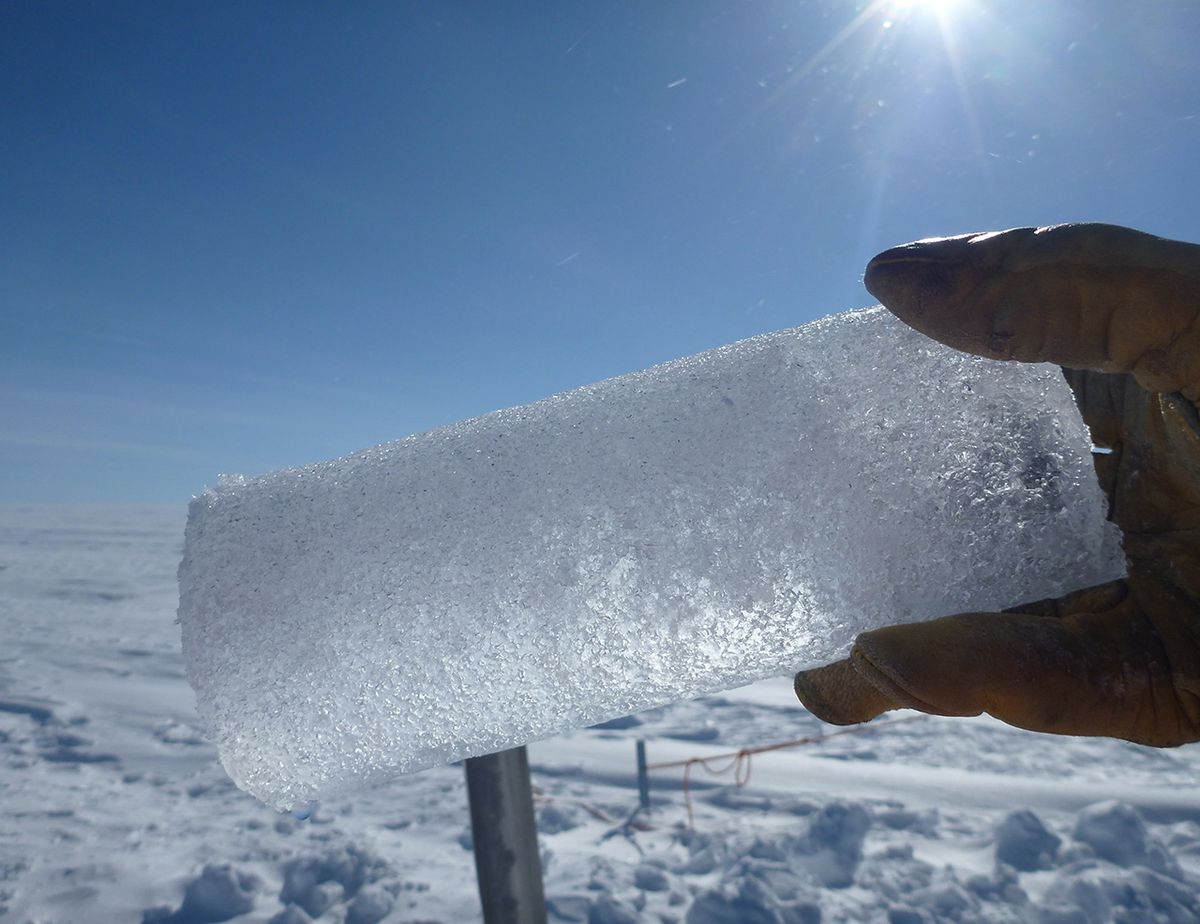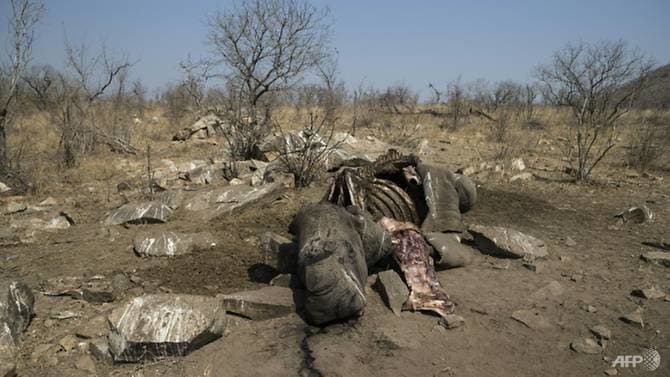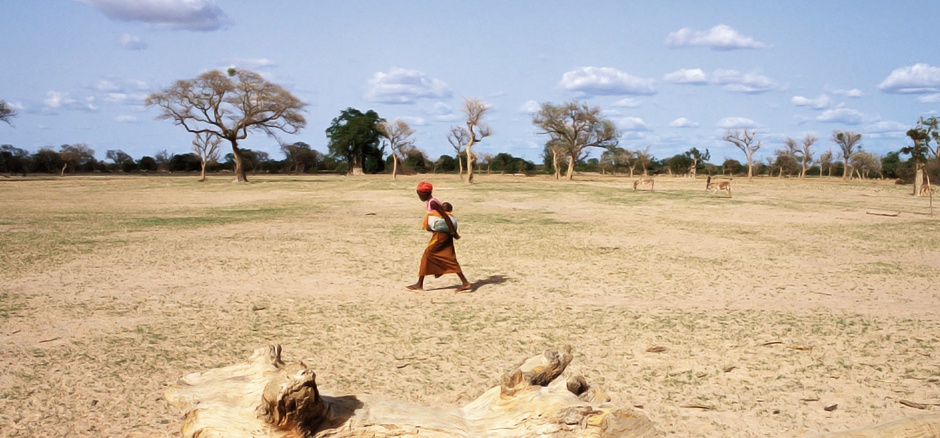U.S. politicians still questioning whether the changing climate is attributable to humans (it is), it’s quite likely that we’ve actually boosted Earth’s carbon dioxide — a potent greenhouse gas — to the highest levels they’ve been in some 15 million years. The number 15 million is dramatically higher than a statistic frequently cited by geologists and climate scientists: That today’s carbon levels are the highest they’ve been on Earth in at least 800,000 years — as there’s irrefutable proof trapped in the planet’s ancient ice.
Air bubbles preserved in ice
Though scientists emphasize that air bubbles preserved in ice are the gold carbon standard, there are less direct, though still quite means to gauge Earth’s long-ago carbon dioxide levels. These measurements, broadly called proxies, include the chemical make-up of long-dead plankton and the evidence stored in the breathing cells, or stomata, of ancient plants.
Scientists have identified this 15 million number by measuring and re-measuring proxies all over the world.

Ancient air stored in ice core bubbles. Image: Nasa
“It’s a good scientific documentation, but it’s an indirect measure,” Michael Prather, a professor of earth system science at the University of California Irvine, said in an interview.
There may have been a time when sea levels were between 16 and 131 feet higher than today
There may have been a time, roughly 3 million years ago during an extremely warm period called the Pliocene Epoch — when sea levels were between 16 and 131 feet higher than today — during which carbon
“However, the concentration of CO2 currently in Earth’s atmosphere is higher or is nearly as high as it has been over any time period during the past 15 million years,” Daniel Breecker, a paleoclimatologist at the University of Texas at Austin Jackson School of Geosciences, said over email.
The critical difference today, however, is that carbon emissions are expected to continue rising. With the unprecedented burning of fossil fuels, carbon accumulations will simply keep going up.
“Of course, C02 concentrations aren’t stopping today,” said Lachniet. “We’re probably going to blow through 550 to 600 ppm.” Those sorts of high carbon concentrations haven’t been experienced on Earth in well over 20 million years, noted Lachniet.
“That makes this conversation even more stark,” he said.
Some folks in the climate community, though, have even argued that today’s climate has the highest concentration of total greenhouse gases — when gases like methane (natural gas) and nitrous oxide are added to the mix — in 20 million years.
This idea, called the “carbon dioxide equivalent” has some support in the climate community, though a variety of climate scientists we reached out to weren’t aware of research supporting this 20 million-year claim.
407.04 parts per million (ppm) CO2 in air 23-Oct-2018 https://t.co/MGD5CTru41
— Keeling_Curve (@Keeling_curve) October 24, 2018
In the end, it’s not just the actual concentration of carbon dioxide that matters — it’s how sensitive the planet ends up being to this dramatically rising carbon accumulation, noted Breecker.
Already, Earth has proven quite sensitive
Since the onset of the Industrial Revolution, Earth’s average temperature has risen by 1.8 degrees Fahrenheit, or 1 degree Celsius. Major consequences have already been regularly observed in Earth’s water cycle — bringing greater odds of extremes in deluges and drought. The most easily-predicted results, record-breaking heat waves and historic wildfires, are manifesting globally, as well as more complex atmospheric changes.
“It [global warming] raises sea levels and makes storm surges worse, it makes the atmosphere wetter, leading to flooding from extreme rainfall, and warming ocean temperatures provide extra energy to tropical storms,” climate scientist Stefan Rahmstorf, head of Earth System Analysis at the Potsdam Institute for Climate Impact Research, said in September.
Record low sea ice extent continues on the Atlantic side of the #Arctic Ocean. This region has been well below average over the last several months. Daily data on the chart is from the @NSIDC. pic.twitter.com/nD1tGpHmPX
— Zack Labe (@ZLabe) October 26, 2018
“The polar ice is melting, in the ocean the Gulf Stream System is weakening, and in the atmosphere the jet stream is getting weird,” Rahmstorf added. Unlike previous geologic epochs, the defining circumstance today isn’t just notably high carbon in the air — it’s how fast it’s all accumulating.
The natural world both loads and removes carbon from the atmosphere over long periods of thousands to tens of thousands of years. For example, a warm period called the Eemian, which ended around 120,000 years ago, slowly melted a significant portion of Greenland’s ice sheets — even with profoundly lower carbon concentrations of around 280 ppm.
But these days, the climate hasn’t yet caught up.
Where civilization ultimately ends up, carbon-wise, is contingent upon how quickly global societies transition to clean energy, and generate electricity without a deep reliance on fossil fuels.
“I would argue what’s really relevant is where we stabilize out,” said Lachniet. “Over the next hundred years we really set the next 10,000 years of climate history.”
Source: Mashable





